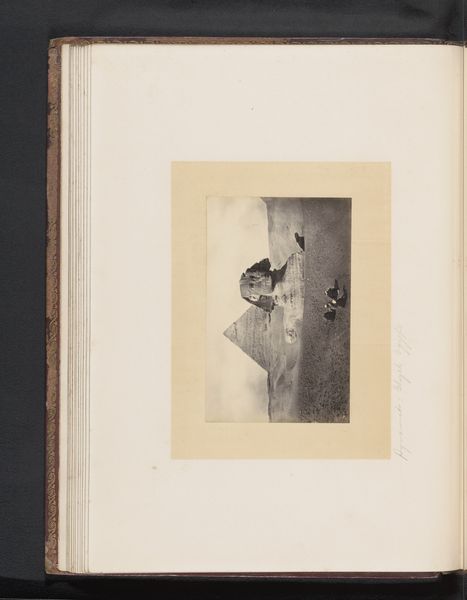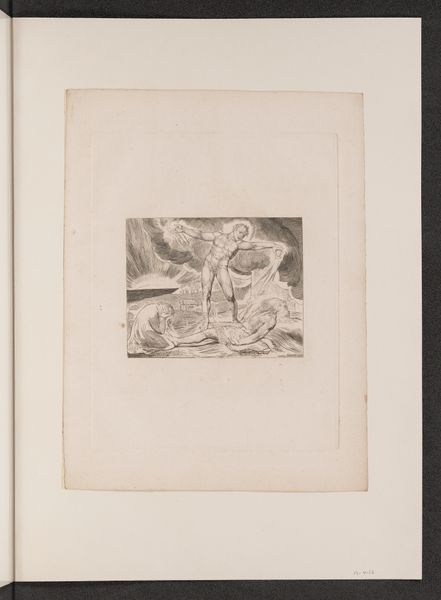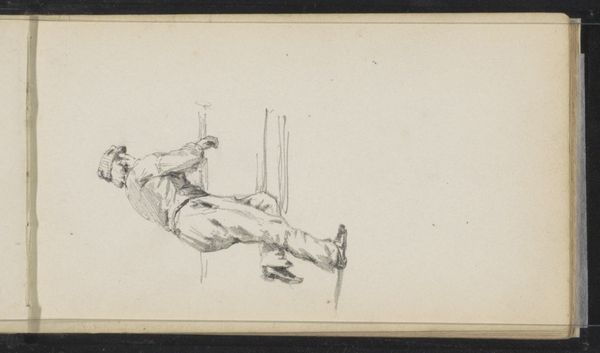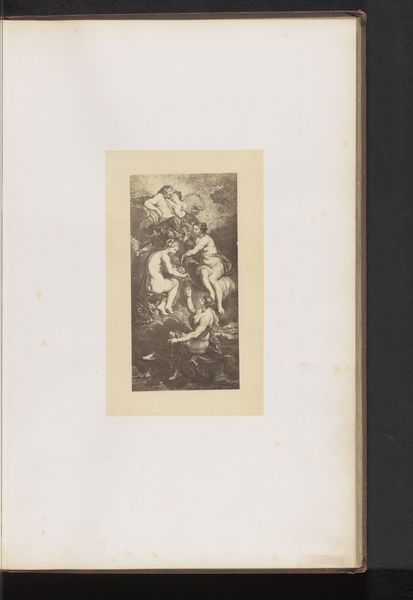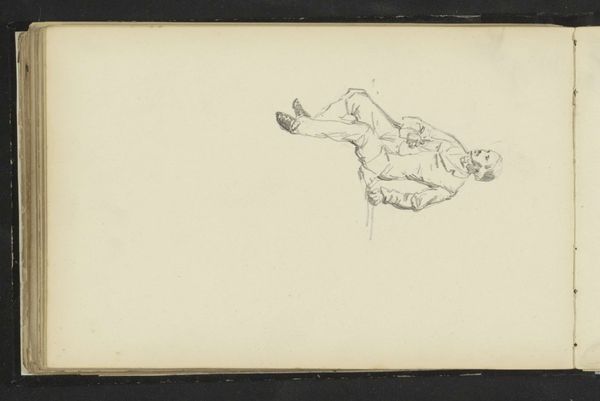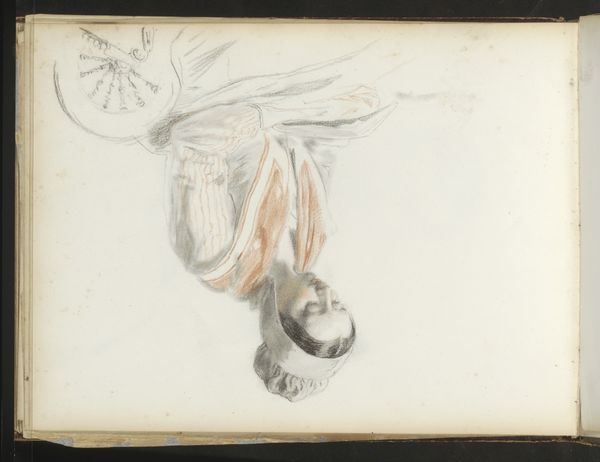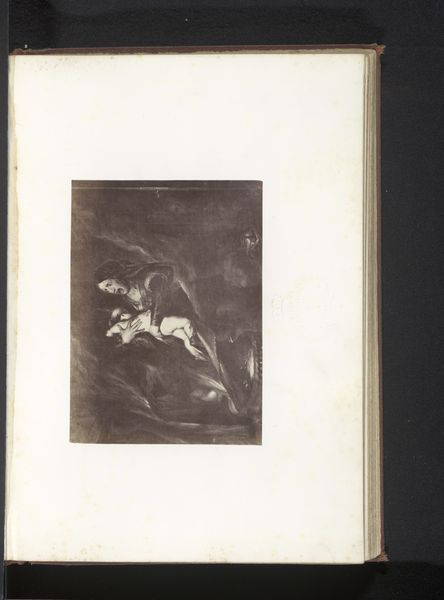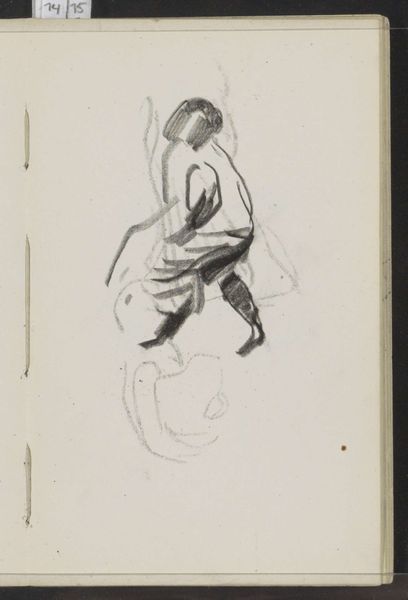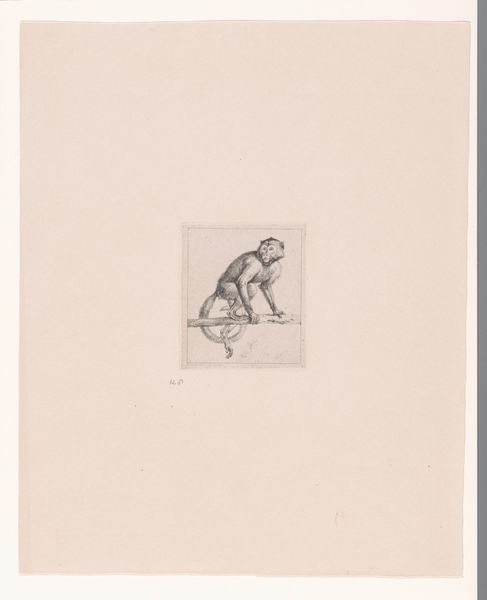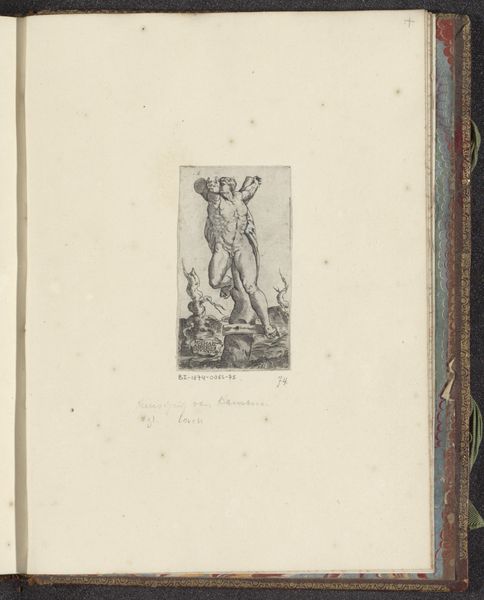
Sculptuur van een paard en ruiter tijdens een sprong, door Leopold Borbone before 1859
0:00
0:00
drawing, print, paper, sculpture
#
drawing
# print
#
classical-realism
#
figuration
#
paper
#
sculpture
#
history-painting
#
academic-art
#
realism
Dimensions: height 146 mm, width 183 mm
Copyright: Rijks Museum: Open Domain
Curator: Welcome. Here we have "Sculpture of a Horse and Rider During a Jump" by Leopold Borbone, created before 1859. It’s rendered as a drawing, which was then produced as a print. What are your initial thoughts? Editor: There’s something incredibly dynamic, yet artificial, about this image. The rearing horse, the frozen moment of the jump... It feels almost like propaganda, an idealized representation of power, perhaps? Curator: Indeed. Borbone was known for his sculptures, often commissioned to depict royalty and military achievements. Reproducing drawings and prints allowed for broader circulation, solidifying political narratives through art. Editor: I wonder about the original context of distribution. Who was this image designed to impress? What socio-political story does it sell to its contemporary viewer? The work screams wealth, domination, even the violent exploitation of animals for a particular message of mastery. Curator: Absolutely. Academic art of this era, especially depictions of equestrian prowess, served to reinforce hierarchies. It’s important to recognize how such imagery contributes to historical power structures, especially when mass produced through printed mediums. Editor: And the classical realism adds to that effect, lending the scene an aura of timeless grandeur and legitimizing whatever message the artist intended. It almost obfuscates the brutal reality behind it with its smooth lines. Curator: Precisely. Borbone uses realism not for accurate portrayal but to mythologize power. Analyzing these visual tools helps reveal underlying ideologies prevalent in his time and in ours. It encourages dialogue and questioning. Editor: Examining its composition and production allows one to decode encoded notions, thus initiating a more involved dialogue about whose perspective takes precedence in artistic representation and cultural memory. Thanks. Curator: I agree, art’s public role always demands constant scrutiny.
Comments
No comments
Be the first to comment and join the conversation on the ultimate creative platform.

